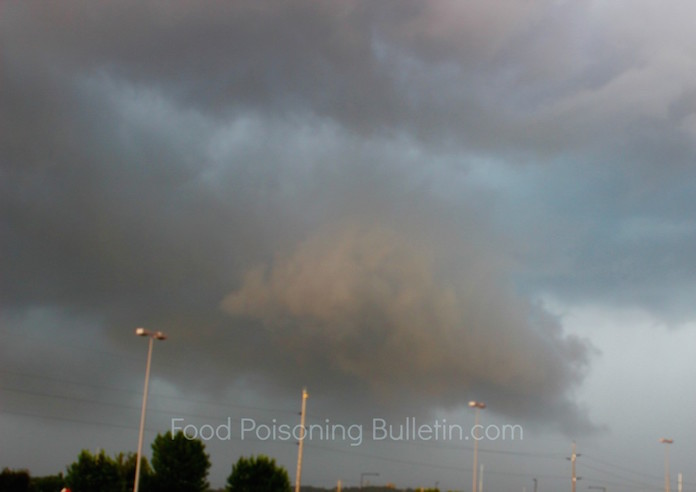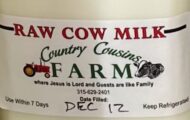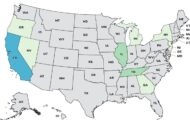Hurricane season is here, and while the summer severe weather season is slowing down in the rest of the country, power outages and severe storms are common in the fall and winter. The USDA offers the Consumer’s Guide to Food Safety during severe storms and hurricanes.

The key to keeping food safe at any time of the year and during any severe weather event is preparation. Keep up to date on watches and warnings and start getting ready as far in advance as you can.
First, keep an appliance thermometer in your fridge and freezer. The freezer should be set at 0°F, and the fridge should be set at 34 to 39°F. Freezers work best when they are at least half full. Group foods together in the freezer to help the food stay cold longer.
It’s a good idea to freeze container of water both for drinking water and to help keep foods cold if and when the power goes out. A full freezer can keep food at a safe temperature for 48 hours without power; but only for 24 hours for a half-full freezer. In addition, plan ahead and know where you can purchase block and dry ice. The fridge can only maintain a safe temperature for about 4 hours, so keep coolers on hand to transfer food with ice blocks or cold packs if necessary. Fifty pounds of dry ice can keep an 18-cubic-foot full freezer cold for 2 days.
When storing food, keep it as high as possible so it stays out of flood water, which is often contaminated with pathogens and heavy metals. Any food that is not in a commercial can is not safe to eat after it has touched flood water. Food containers that aren’t waterproof include crimped lids, snap lids, screw-caps, and pull tops. Cardboard juice/milk/baby food formula boxes and home canned foods are also not safe after a flood.
After the emergency, never taste a food to determine its safety. Pathogens that will make you sick will not change the taste, texture, aroma, or appearance of food. Keep your fridge and freezer doors closed as long as possible to maintain temperature.
Examine food after the power is back on. Any food can be safety re-frozen if it still contains ice crystals. Discard any refrigerated perishable food such as meat, poultry, fish, soft cheeses, eggs, milk, leftovers, and deli items after four years without power. When in doubt, throw it out!
If food has spoiled, throw it out, then clean the fridge or freezer with hot water and detergent, then use a mild bleach solution to thoroughly clean the appliance. Rinse it and dry, then leave the door open for 15 minutes. Close the appliance and let it reach temperature before you add more food.
The USDA has a chart at the linked page to help you determine what foods to throw and which to keep. Stay safe during this severe storms and hurricane season!




